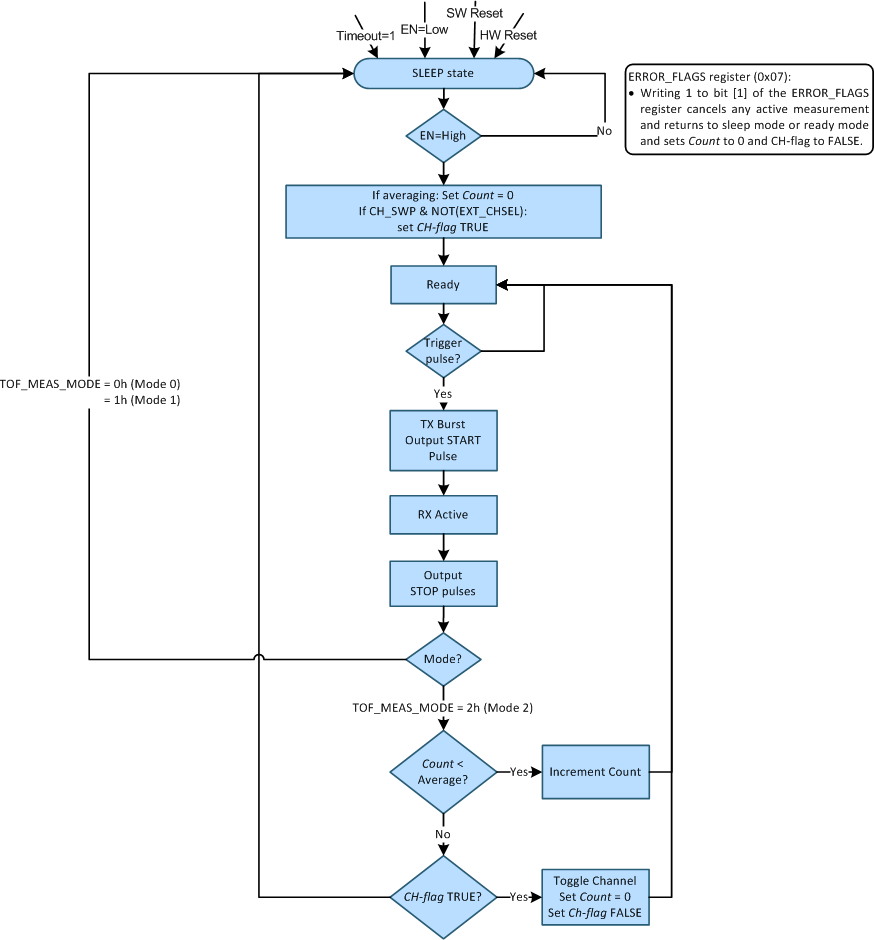SNAS854 February 2023 TDC1000-Q1
PRODUCTION DATA
- 1 Features
- 2 Applications
- 3 Description
- 4 Revision History
- 5 Pin Configuration and Functions
- 6 Specifications
- 7 Parameter Measurement Information
-
8 Detailed Description
- 8.1 Overview
- 8.2 Functional Block Diagram
- 8.3 Feature Description
- 8.4 Device Functional Modes
- 8.5 Programming
- 8.6 Register Maps
- 9 Application and Implementation
- 10Device and Documentation Support
- 11Mechanical, Packaging, and Orderable Information
8.4.2 State Machine
A state machine in the TDC1000-Q1 manages the operation of the various measurement modes (see #SNAS6481134). At power on, the state machine is reset and most blocks are disabled. After the power-on sequence is complete, the device goes into SLEEP mode if the EN pin is low or into READY mode if the EN pin is high. In the SLEEP or READY state, the TDC1000-Q1 is able to receive SPI commands to set registers and configure the device for a measurement mode.
Although the SPI block is always active, TI does not recommend performing configuration changes while the device is active. Configuration changes should be performed while the device is in the SLEEP state or in the READY state.
If the EN pin is high and a trigger signal is received, the state machine will begin the execution of the configured measurement. If the device is configured in Mode 0 or Mode 1, the state machine will return to the SLEEP state after the measurement is completed. If the device is configured in Mode 2, the state machine returns to the READY state and waits for the next trigger to continue with the next measurement.
The device can be forced to exit a measurement by applying a logic high on the RESET pin high or a logic low on the EN pin.
 Figure 8-14 Simplified TDC1000-Q1 State Machine Diagram
Figure 8-14 Simplified TDC1000-Q1 State Machine Diagram